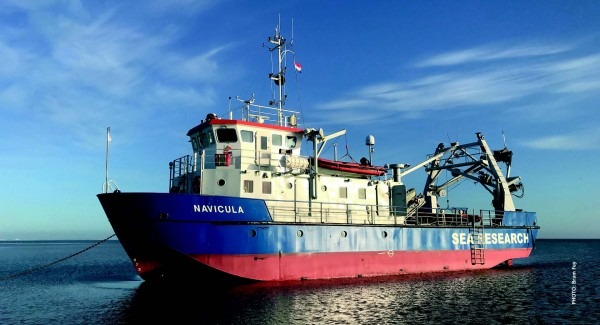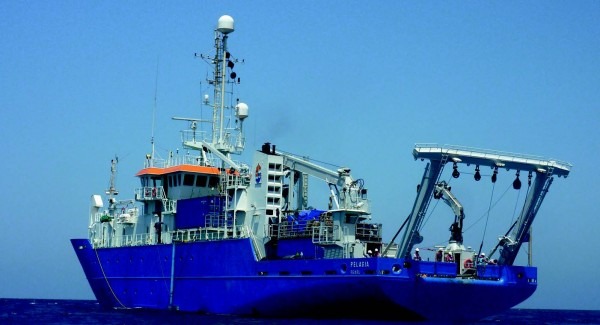New Research Vessels for NIOZ
 At the request of the Royal Netherlands Institute for Sea Research (NIOZ), MARIN started studies for two new research vessels in May 2018, to replace its existing vessels PELAGIA and NAVICULA.
At the request of the Royal Netherlands Institute for Sea Research (NIOZ), MARIN started studies for two new research vessels in May 2018, to replace its existing vessels PELAGIA and NAVICULA.
Although both are seagoing vessels, the PELAGIA is designed for ocean research, while the smaller NAVICULA is deployed in the Dutch estuaries.
PELAGIA
The PELAGIA had actually been tested at MARIN in 1989, and has performed very well over the years. This previous experience told MARIN that the new design would be a challenge. Working at sea at zero or low speed with a minimum of downtime, requires a vessel with good seakeeping behaviour. Furthermore, because researchers are not seafarers, comfort during transit is more important. Therefore, the main dimensions, distribution of mass and the longitudinal location of the accommodation largely determine the design.
MARIN’s main focus was mainly on seakeeping behaviour and in line with this different sized hull designs were studied. The existing vessel was also taken into account. Points of attention for the transit condition were added resistance in waves and seasickness.
For survey operations bubble sweepdown was investigated, together with propeller ventilation, which is particularly unwanted during these operations. For launching and recovery operations at zero speed, the vertical accelerations and deck wetness were checked. Regarding deck wetness, the freeboard was varied in order to examine the impact on it. This detailed study eventually resulted in a ship of a larger size than her predecessor.
NAVICULA
 For the successor of the NAVICULA, the design points of attention were different. And very little was known about the design of this vessel. This required comparative studies for all disciplines in order to enable an assessment of the new design.
For the successor of the NAVICULA, the design points of attention were different. And very little was known about the design of this vessel. This required comparative studies for all disciplines in order to enable an assessment of the new design.
A determining design point of departure for NAVICULA’s successor was that she must be a shallow draught vessel as she will mainly operate in the Wadden Sea. This definitely leads to a very high breadth–draught ratio. Too much draught and length cannot be allowed, but sufficient displacement is required, resulting in a wide vessel.
When sailing in the fairways, the critical speed regime is easily achieved. From a fuel consumption point of view it is advisable to keep the vessel away from that. However, a certain speed is required to keep the vessel’s course under control in heavy beam winds. Therefore, the manoeuvrability was studied. At low tide, research will be done with the ship berthed on the sandbanks, and we will pay particular attention to vulnerable hull appendages.
As the vessel must operate in the southern part of the Netherlands as well, her seakeeping behaviour was investigated. This was necessary because she normally takes the shortcut over the North Sea but if the weather is too bad she takes an inland route which restricts her air draught.
Finally, for the design of both vessels the energy transition has been considered. Consequently, additional internal space and additional displacement has been taken care of to allow for the larger size and mass of future drives and the related increase in fuel capacity.

